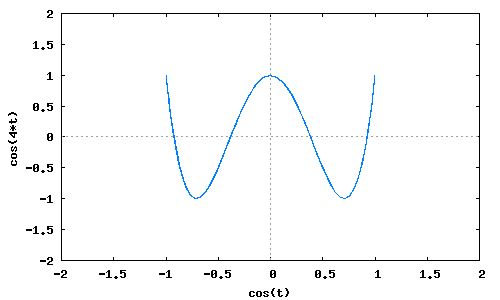Ejercicios 2: Funciones de una variable
De Software Libre para la Enseñanza y el Aprendizaje de las Matemáticas (2010-11)
Funciones a utilizar: if...then...else, assume, limit, forget, plot2d, diff, define, solve, trigexpand, trigsimp y subst.
Ejercicio 1
Sean <math>a</math> y <math>b</math> dos números reales. Se considera la función <math>f</math> definida sobre los números reales por
- <math>
f(x)=\left\{ \begin{array}{lll}
\dfrac{e^x-1}{x} &\mbox{si} & x>0\\
a\,x+b &\mbox{si} & x\leq 0
\end{array} \right. </math>
Ejercicio 1.1
Definir la función <math>f</math> usando el condicional if ... then ... else.
Solución:
Ejercicio 1.2
limit no puede evaluar expresiones del tipo if...then. Por ello, para determinar el límite de <math>f</math> en cero por la derecha se necesita precisar en qué intervalo se encuentra <math>x</math>. Esto puede hacerse con la función assume.
Escribir la expresión assume(x>0), después calcular el límite de <math>f</math> en cero por la derecha. Se puede eliminar la hipótesis sobre <math>x</math> con forget(x>0).
Solución:
Ejercicio 1.3
Deducir el valor de <math>b</math> para el que <math>f</math> es continua en <math>\mathbb{R}</math>.
Solución:
Ejercicio 1.4
Calcular la derivada de <math>f</math> en cero por la derecha.
Solución:
Ejercicio 1.5
Calcular el valor de <math>a</math> para el que <math>f</math> es derivable en cero.
Solución:
Ejercicio 2
Sea <math>g</math> la función real definida por <math>g(x) = 2x-\sqrt{1+x^2}</math>
(%i1)g(x):= 2*x-sqrt(1+x^2)$
Ejercicio 2.1
Calcular los límites de <math>g</math> en más y menos infinito.
Solución:
Ejercicio 2.2
Dibujar la gráfica de la función <math>g</math>.
Solución:
Ejercicio 2.3
Calcular <math>g'(x)</math>.
Solución:
Ejercicio 2.4
Resolver la ecuación <math>g(x)=0</math>.
Solución:
Ejercicio 2.5
Determinar los intervalos de crecimiento de <math>g</math>.
Solución:
Ejercicio 2.6
Calcular las ecuaciones reducidas de las asíntotas de <math>g</math>.
Solución:
Ejercicio 3
Ejercicio 3.1
Desarrollar <math>cos(3t)</math> en función de <math>cos(t)</math>.
Solución:
Ejercicio 3.2
Desarrollar <math>cos(4t)</math> en función de <math>cos(t)</math>
(%i2)wxplot2d([['parametric, cos(t), cos(4*t), [t, -10, 10], [nticks, 300]]], [x,-2,2], [y,-2,2])$ (%o2)
Ejercicio 3.3
Desarrollar <math>cos(5t)</math> en función de <math>cos(t)</math>.
Solución:
Ejercicio 3.4
Determinar los polinomios <math>T_n</math> de la variable <math>x</math> tales que para todo <math>t \in \mathbb{R}</math>, <math>cos(nt) = T_n(cos\ t)</math> para <math>n \in \{3,4,5\}</math>.
Solución:
Ejercicio 3.5
Representar las funciones <math>T_3</math>, <math>T_4</math> y <math>T_5</math> en la misma gráfica.
Solución:
